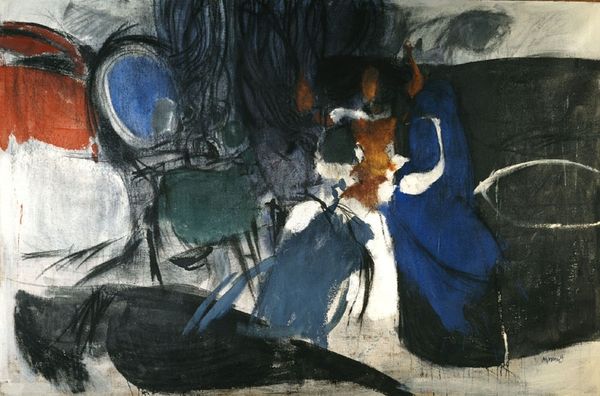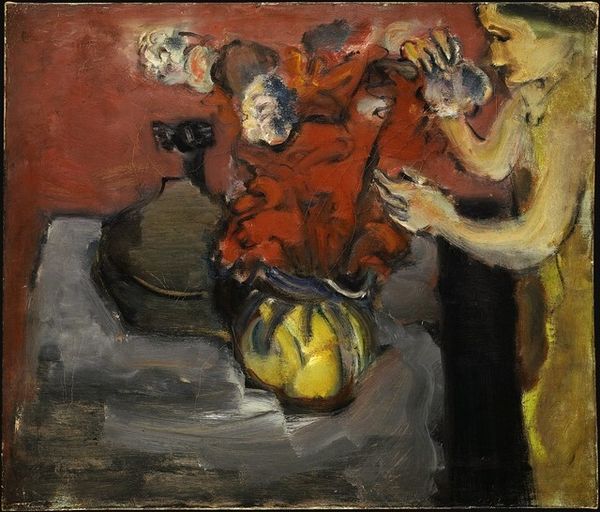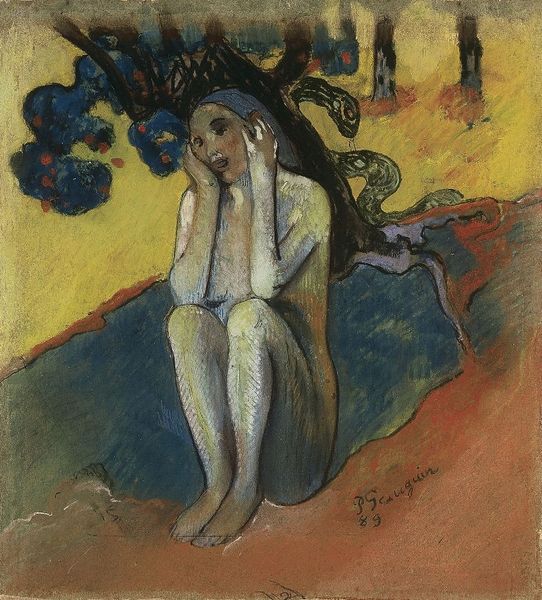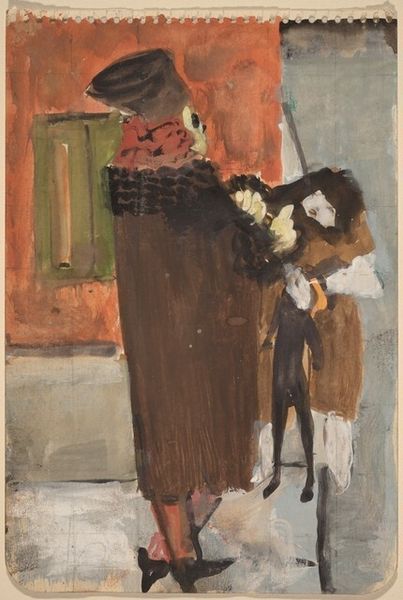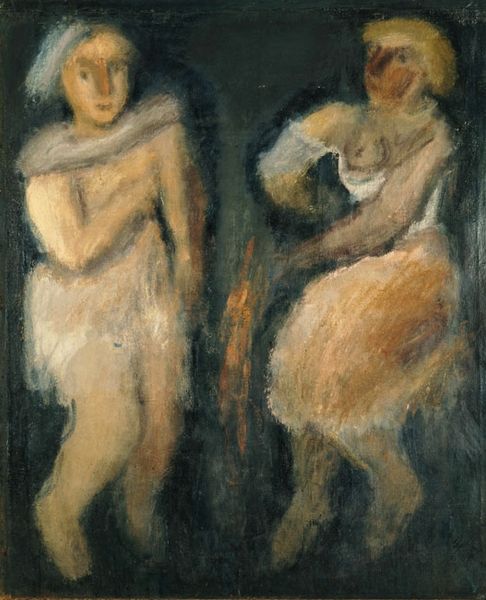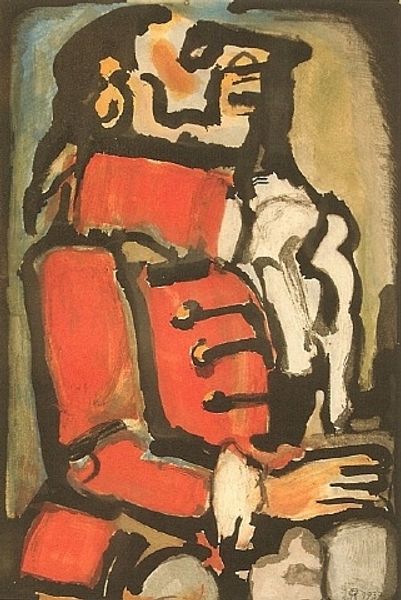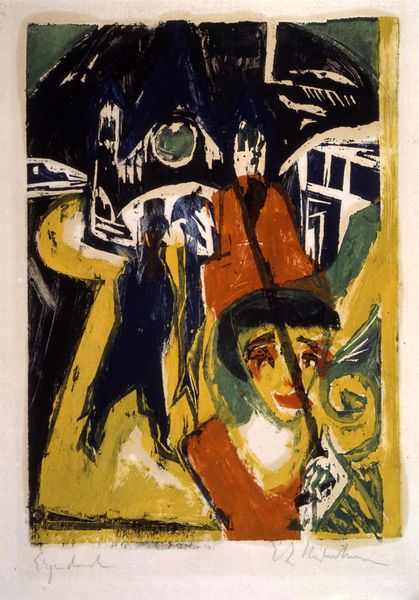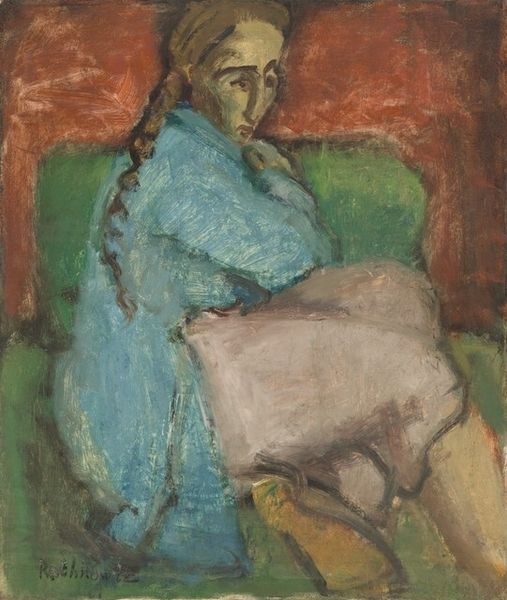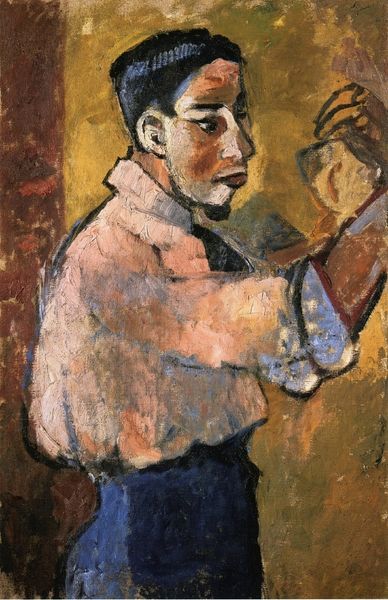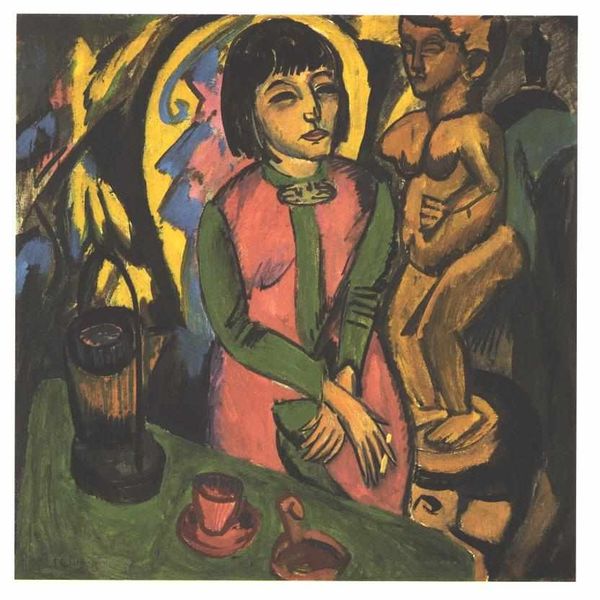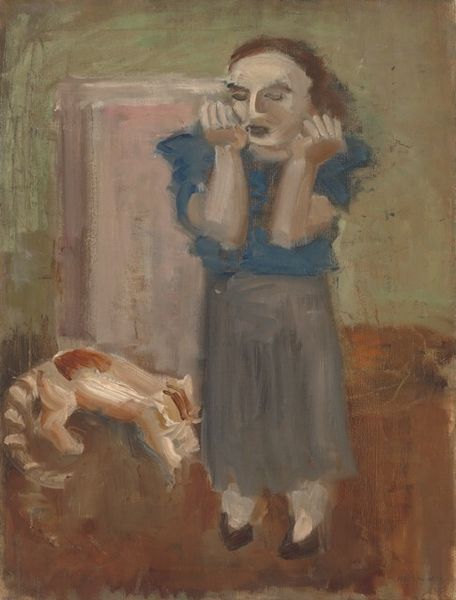
Dimensions: overall: 64.1 x 48.7 cm (25 1/4 x 19 3/16 in.) framed: 74.6 x 57.8 x 6.2 cm (29 3/8 x 22 3/4 x 2 7/16 in.)
Copyright: National Gallery of Art: CC0 1.0
Editor: We're looking at Mark Rothko's "Mother and Child," an oil painting from around 1934. There's a definite weightiness to the piece; the dark palette and impasto technique contribute to this very somber mood. What strikes you when you observe this piece? Curator: Primarily, the composition intrigues me. Note how the figures dominate the vertical plane, compressed within a shallow pictorial space. The restricted color palette further intensifies this sense of confinement. Can you see how Rothko uses brushstrokes to create volume rather than precise outlines, which adds to the overall emotional impact? Editor: Yes, the lack of distinct outlines makes them feel less defined. The impasto is very visible too. It gives the painting a sculptural feel almost. It seems almost as if their features are trying to break free from the surface of the canvas. Why do you think Rothko used such visible brushwork? Curator: I suggest we consider the inherent qualities of impasto as a technique. Thick paint application amplifies texture and reflects light in a particular way. In semiotic terms, we can see impasto as the signifier that emphasizes surface quality. Also consider what is communicated with Rothko's use of layering. The very material nature of paint becomes paramount, pushing us to recognize paint less as a representation of something else, but an object of great tactile expression. Editor: So, less about accurately representing figures, and more about conveying feeling through texture and form? Curator: Precisely. Through this formal analysis, we realize it has minimal detail with greater expression. This elevates emotion through form. The artist uses materiality, texture, and colour to convey intense human experience rather than relying on traditional, representational forms. Editor: That gives me a completely new framework for decoding it. I’m starting to see it as much more of an interior landscape, a painting not about the subject, but about what it meant. Curator: A fitting conclusion! The essence is held not in the depicted figures, but in the visceral engagement with form, brushwork and emotion.
Comments
No comments
Be the first to comment and join the conversation on the ultimate creative platform.
